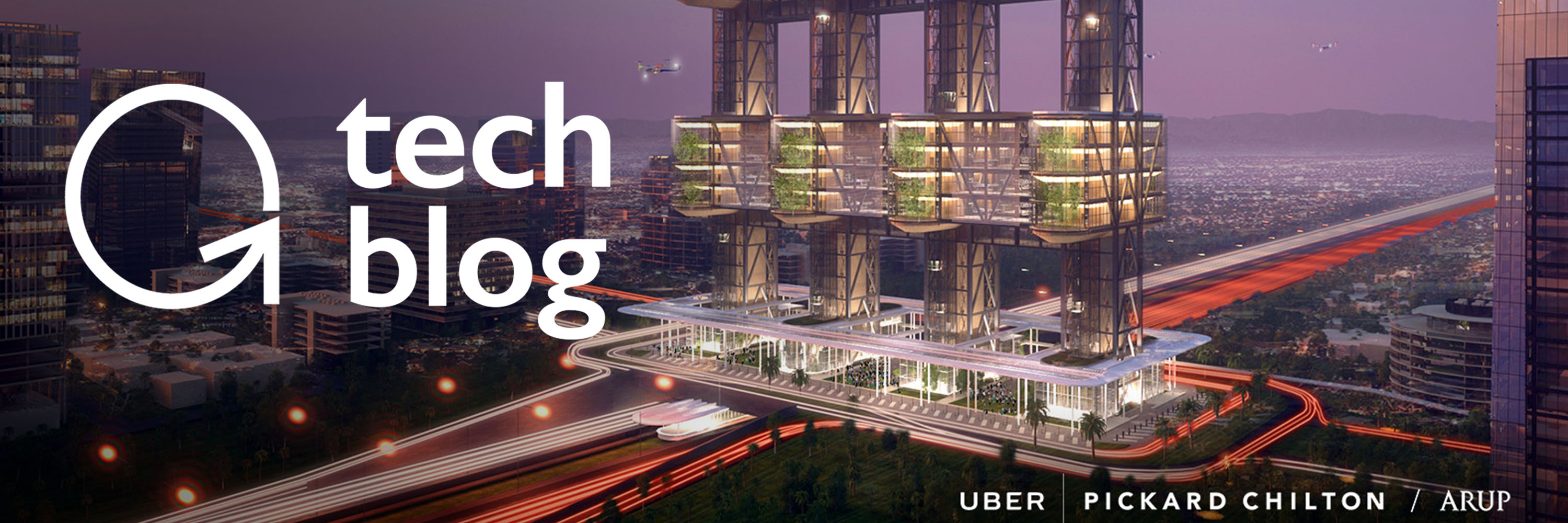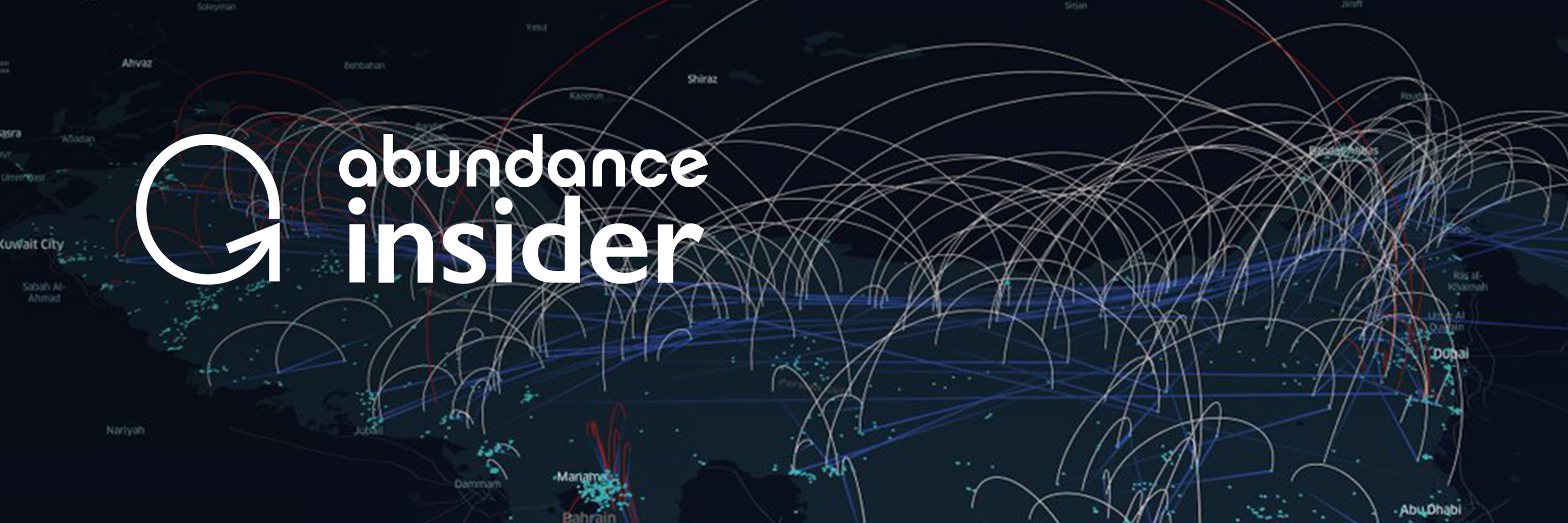
In 2018, for the sixth straight year, Los Angeles earned the dubious honor of being the most gridlocked metropolis in the world, where the average driver spends 2.5 working weeks per year trapped in traffic.
And countless cities are close behind. For the average driver, dreams of being elevated above jammed freeways and flying—uninterrupted—to one’s destination seem well out of reach. Yet these visions will soon become realities.
The era of the internal combustion engine (ICE) car is ending. From here on out, it’s all about electric vehicles, autonomous ride-sharing, and flying fleets. The implications for society and the automotive industry are HUGE.
(Note #1: This blog is an excerpt from my next book The Future is Faster Than You Think, co-authored with Steven Kotler, to be released January 28th, 2020.)
(Note #2: If you like this blog, share it! | LinkedIn | Facebook | Twitter | Or send your friends and family to this link to subscribe!)
P.S. Send any tips to our team by clicking here, and send your friends and family to this link to subscribe to Abundance Insider.
Death of Car Ownership
We may have reached “peak ICE” production this past year.
Don’t believe me? Oil demand is predicted to peak as early as 2021, according to Bloomberg New Energy Finance, and some experts suggest it may have already peaked.
Currently, electric vehicles displace the need for 350,000 barrels of oil each day. And long term, EVs are projected to disrupt demand of over 58,000,000 barrels of oil per day — a figure steadily on the rise as EV costs plummet.
Speeding to first place in today’s transit race, EVs are set to win by sheer economic advantage, fast becoming the foundation for autonomous ride-sharing fleets of the future. As that happens, it will soon become un-economical and socially unacceptable for you to hold on to that old gas-guzzling car.
Next, we will see electric vehicles migrating to the skies.
By mid-2018, over US$1 billion had been invested by startups, VCs and aerospace giants in at least twenty-five different flying car companies. A dozen vehicles are being test-flown, while another dozen are at stages ranging from PowerPoint to prototype.
Let’s explore the next era of transportation…
The Hardware is Here
Just this year, Uber hosted its third annual flying car conference, Uber Elevate, in Washington D.C. The event attracted a motley crew of power elites: CEOs, entrepreneurs, architects, designers, technologists, venture capitalists, government officials, and real estate magnates. Over a thousand in total, all gathered to witness the birth of a new industry.
Jeff Holden, Uber’s (former) Chief Product Officer, initiated the conference with quite a vision.
“We’ve come to accept extreme congestion as part of our lives,” says Holden. “In the U.S., we have the honor of being home to ten of the world’s twenty-five most congested cities, costing us approximately $300 billion in lost income and productivity.”
Uber aims to solve urban mobility by offering “aerial ridesharing” solutions, taking advantage of untapped air space just as New York City scaled buildings to the skies to combat increasing congestion on the ground.
Aerial ridesharing might sound like a sci-fi cliché, but Holden has a solid track record of disruptive innovation. In the late 1990s, he followed Jeff Bezos from New York to Seattle and became one of the earliest employees at Amazon, where he spearheaded Amazon Prime.
Next, Holden went to another disruptive startup, Groupon, and then on to Uber, where he’s strung together a series of wins: UberPool, UberEats and, most recently and radically, Uber’s self-driving car program.
So when Holden proposed an even zanier product line—that Uber take to the skies—what followed was no surprise: the company’s leadership, as well as everybody else, took him seriously.
And for good reason. The theme of the Uber Elevate Summit isn’t actually about flying cars. The cars are already here. Instead, the focus was path to scale. And the more critical point: that path is a lot shorter than many suspect.
(This January, Uber Elevate will be featuring some of their latest developments at my annual Abundance360 conference in Beverly Hills. If you're interested, learn more and apply here.)
As of last year, over twenty-five different flying car startups have secured upwards of $1 billion in aggregate funding.
Larry Page, co-founder and CEO of Alphabet, was among the first to envision eVTOL potential, personally funding two companies, Zee-Arrow and Kittyhawk.
Then there are established players like Boeing, Airbus, Embraer and Bell Helicopter (now just called ‘Bell,’ a reference to the future disappearance of the helicopter itself), who are also in on the game.
Thus, for the first time in history, we’re past the point of talking about the possibility of flying cars. The cars are here.
Car Ownership Becomes Economically Irrational
“Uber’s goal,” according to Holden, “is to demonstrate flying car capability in 2020 and have aerial ridesharing fully operational in Dallas and LA by 2023.” He goes even further: “Ultimately, we want to make it economically irrational to own and use a car.”
How irrational? Let’s look at the numbers.
Today, the marginal cost of car ownership—that is, not the purchase price, but everything else that goes with a car: gas, repairs, insurance, parking, etc.—is 49 cents per passenger mile. For comparison, a helicopter, which has many more problems than just cost, covers a mile for about $8.93.
For their 2020 launch, UberAir wants to reduce that per mile price to $5.73, then rapidly drive it down to $1.84. But it’s Uber’s long-term target that’s the game-changer—44 cents per mile—or cheaper than the cost of driving.
And you get a lot per mile. The specs for Uber’s proposed service are impressive. Their main interest is in “electric vertical take-off and landing vehicles”—or eVTOLs for short.
For an eVTOL to qualify for Uber’s aerial ridesharing program, it must be able to carry one pilot and four passengers at a speed of over 150 mph for 3 continuous hours of operation.
While they envision 25 miles as their shortest flight (think Malibu to downtown Los Angeles), these requirements allow you to leap from northern San Diego to southern San Francisco in a single bound.
And Uber now boasts five partners who have committed to delivering eVTOLs that meet these specs, with another five or ten still to come.
Aerial Freeways
But the vehicles alone don’t make car ownership irrational. So Uber has also partnered with NASA and the FAA to develop the air traffic management system to coordinate their flying fleet.
But beyond government players, Uber has additionally teamed up with architects, designers and real estate developers to create a string of “mega-skyports” needed for passengers to load and unload and for vehicles to take off and land.
To qualify as Uber-ready, a “mega-skyport” must be able to recharge vehicles, handle 1,000 take-offs and landings per hour (4,000 passengers) and occupy no more than three acres of land—which is small enough to sit atop old parking garages or the roofs of skyscrapers.
And according to Uber’s calculations, a network 40 skyports strong, positioned strategically around a city, should be able to clear a million passengers an hour.
Implications
Put all this together and by 2030, you’ll be able to order an on-demand aerial rideshare as easily as you do UberPool or UberEats. And if a century’s worth of transportation adoption rates are to be trusted, urban aviation could be a central mode of getting from A to B in the course of a mere decade.
But all of this raises a fundamental question: Why now? After dreaming up Blade Runner hover cars and Back to the Future DeLorean DMC-12s for centuries, how will we be able to accomplish this mission within the next decade?
There are over a hundred different patents on file in the U.S. for “roadable aircraft.” A handful have flown. Most have not. None have delivered on the promise of the Jetsons.
In fact, our frustration at this lack of delivery has become a meme unto itself. At the turn of the last century, in a now famous IBM commercial, comedian Avery Johnson asked: “It’s the year 2000, but where are the flying cars? I was promised flying cars. I don’t see any flying cars. Why? Why? Why?”
In 2011, in Peter Thiel’s now famous manifesto, “What Happened To The Future,” the prominent investor echoed this concern, writing: “We wanted flying cars, instead we got 140 characters.”
Yet, as should be clear by now, the wait is over.
The Cars Are Here. And the infrastructure is coming fast. While we were sipping our lattes and checking our Instagram, science fiction became science fact.
Want a copy of my next book? If you’ve enjoyed this blogified snippet of The Future is Faster Than You Think and want to be notified when it comes out and get special offers (signed copies, free stuff, etc.), then register here to get early bird updates on the book and learn more!
Share this blog? Please share it with friends on LinkedIn | Facebook | Twitter | Send your friends and family to this link to subscribe!
Join Me
(1) A360 Executive Mastermind: If you’re an exponentially and abundance-minded entrepreneur who would like coaching directly from me, consider joining my Abundance 360 Mastermind, a highly selective community of 360 CEOs and entrepreneurs who I coach for 3 days every January in Beverly Hills, Ca. Through A360, I provide my members with context and clarity about how converging exponential technologies will transform every industry. I’m committed to running A360 for the course of an ongoing 25-year journey as a “countdown to the Singularity."
If you’d like to learn more and consider joining our 2020 membership, apply here.
(2) Abundance-Digital Online Community: I’ve also created a Digital/Online community of bold, abundance-minded entrepreneurs called Abundance-Digital. Abundance-Digital is Singularity University's ‘onramp’ for exponential entrepreneurs — those who want to get involved and play at a higher level. Click here to learn more.
(Both A360 and Abundance-Digital are part of Singularity University — your participation opens you to a global community.)
Know someone who would benefit from getting Abundance Insider? Send them to this link to sign up.
P.S. I've just released a podcast with my dear friend Dan Sullivan called Exponential Wisdom. Our conversations focus on the exponential technologies creating abundance, the human-technology collaboration, and entrepreneurship. Head here to listen and subscribe.
Topics: 3D Printing Materials Science food agriculture materials automation future of food agtech vertical farming Plenty Inc. hydroponics aeroponics food tech food production digital agriculture RIPE Project Apeel Sciences Anrich3D Aerofarms RedefineMeat







